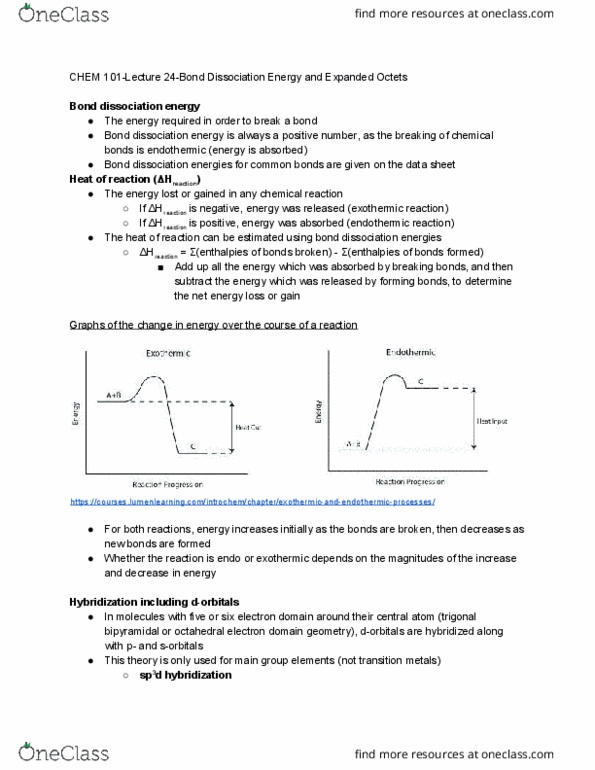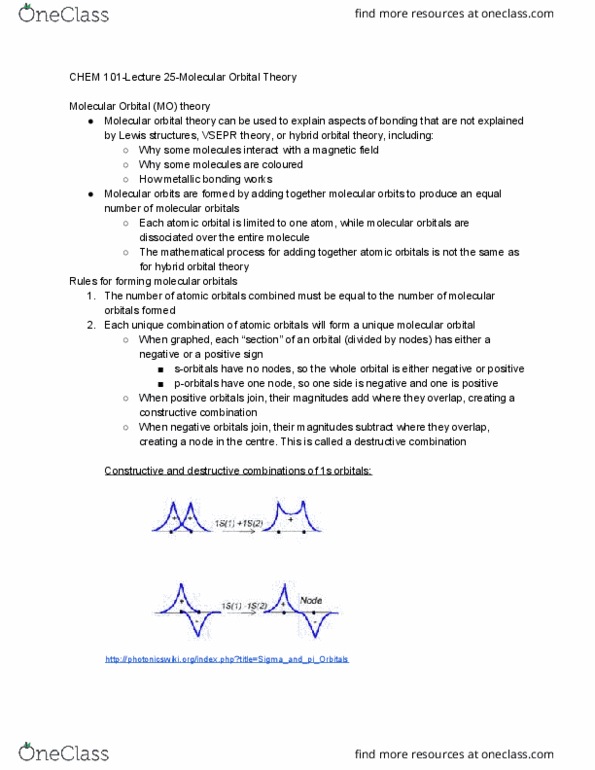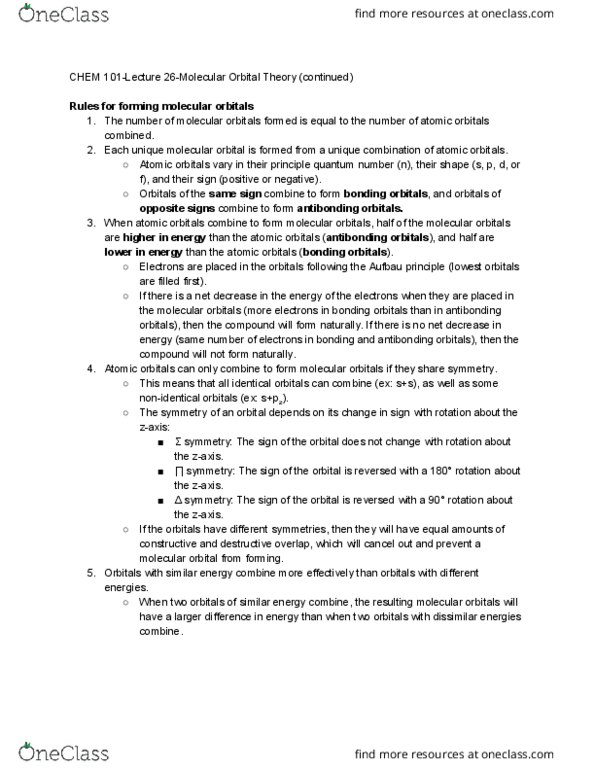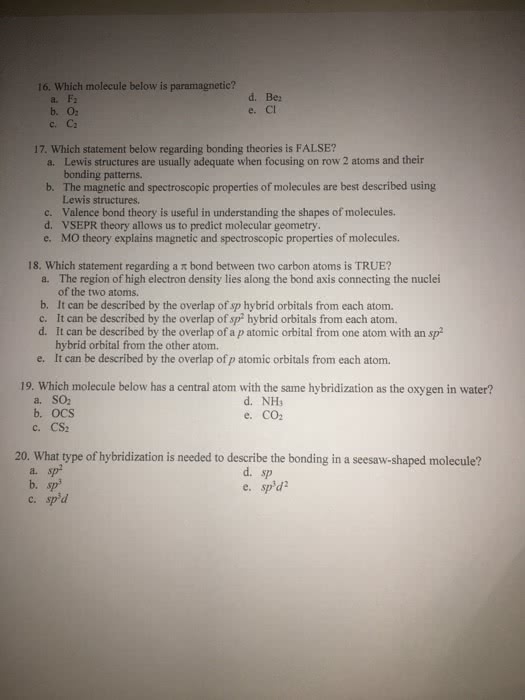CHEM 101 Lecture Notes - Lecture 25: Molecular Orbital Theory, Orbital Hybridisation, Atomic Orbital
CHEM 101 verified notes
25/40View all
24

CHEM 101 Lecture Notes - Lecture 24: Bond-Dissociation Energy, Trigonal Bipyramidal Molecular Geometry, Endothermic Process
25

CHEM 101 Lecture Notes - Lecture 25: Molecular Orbital Theory, Orbital Hybridisation, Atomic Orbital
26

CHEM 101 Lecture Notes - Lecture 26: Molecular Orbital Theory, Principal Quantum Number, Atomic Orbital
Document Summary
Molecular orbital theory can be used to explain aspects of bonding that are not explained by lewis structures, vsepr theory, or hybrid orbital theory, including: Why some molecules interact with a magnetic field. Molecular orbits are formed by adding together molecular orbits to produce an equal number of molecular orbitals. Each atomic orbital is limited to one atom, while molecular orbitals are dissociated over the entire molecule. The mathematical process for adding together atomic orbitals is not the same as for hybrid orbital theory. Rules for forming molecular orbitals: the number of atomic orbitals combined must be equal to the number of molecular orbitals formed, each unique combination of atomic orbitals will form a unique molecular orbital. When graphed, each section of an orbital (divided by nodes) has either a negative or a positive sign. S-orbitals have no nodes, so the whole orbital is either negative or positive.


